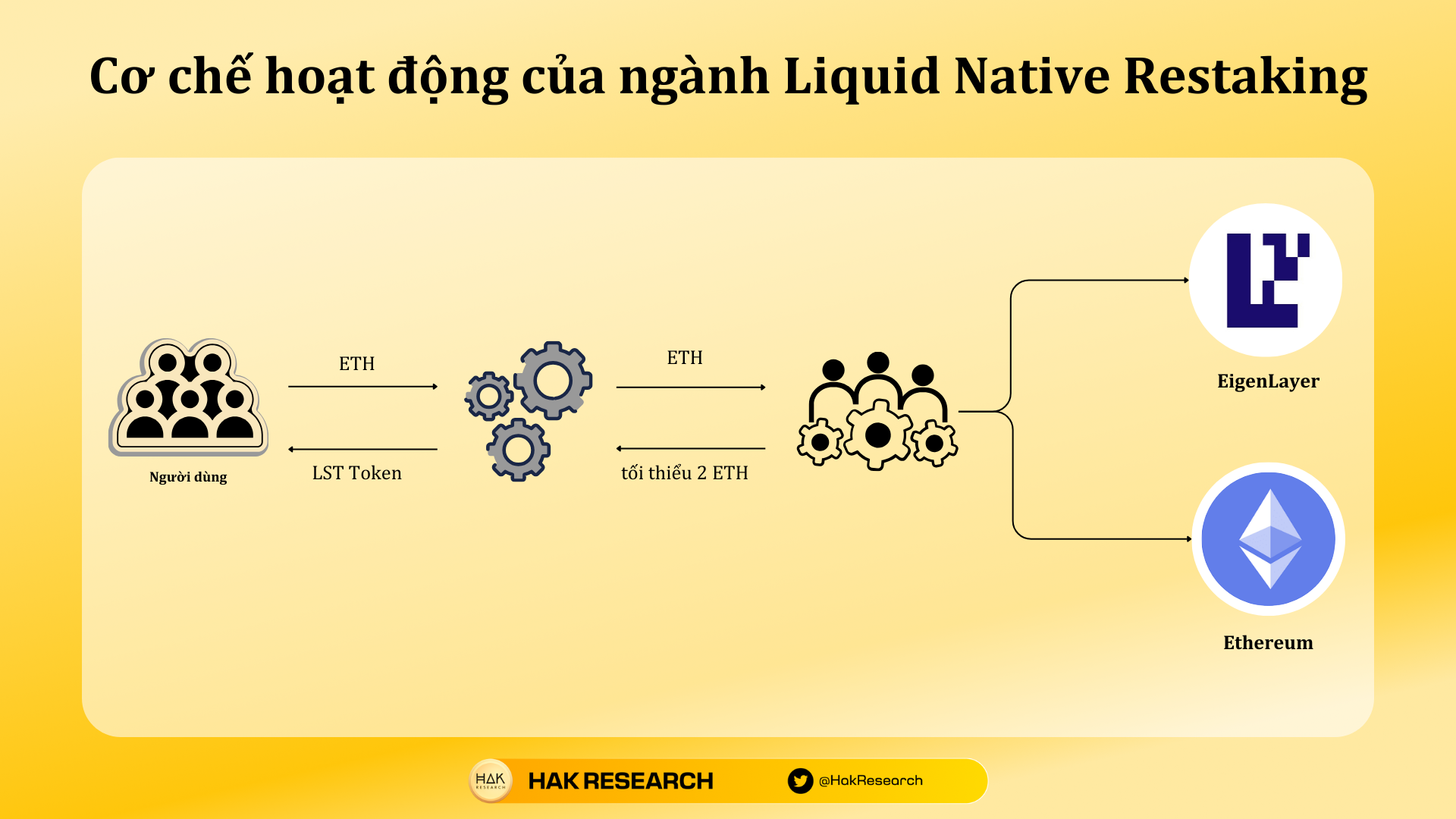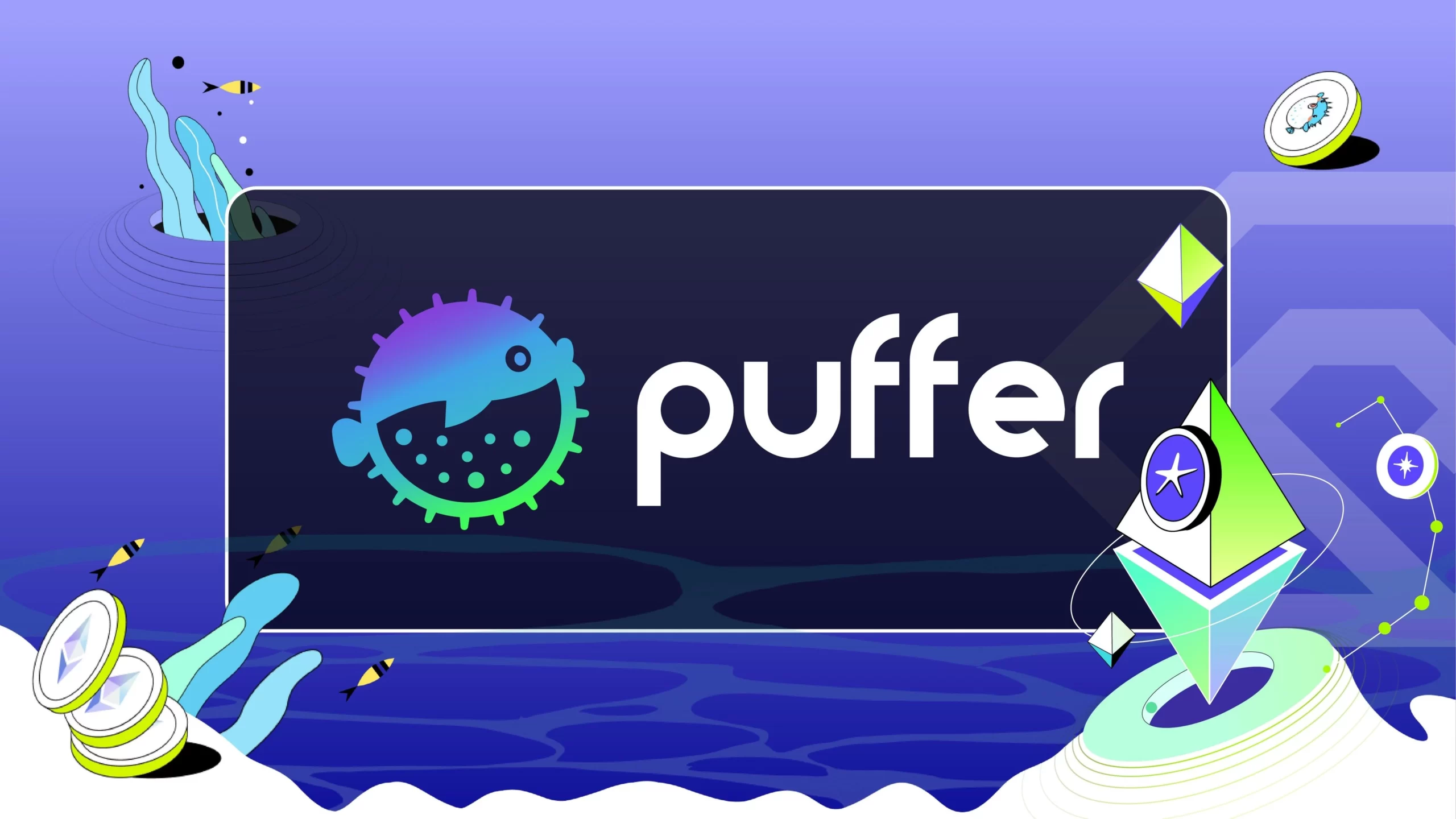What is Liquid Native Restaking? Liquid Native Restaking is one of the extremely important pieces in the EigenLayer ecosystem and the DeFi market. Projects in the Liquid Native Restaking segment are receiving a lot of attention from the community and famous investment funds. So what’s interesting about Liquid Native Restaking? Let’s find out together in the article below.
Overview of Liquid Native Restaking
Overview of Restaking and Native Restaking
Restaking is a concept introduced by EigenLayer to represent users staking LST Tokens into its platform, and this is the user’s second stake so it is called Restaking.
Besides, the concept of Native Restaking refers to the activities of Validators on the EigenLayer network. Normally, Validators on the Ethereum network only have one profit on Ethereum, however with EigenLayer’s Native Restaking model, Validators on the Ethereum network can “work more” on EigenLayer to get more profits.
However, Native Restaking also has some inherent disadvantages, which created the conditions for Liquid Native Restaking to be born, including:
- Deploying a Validator on the Ethereum network requires hardware and financial requirements. In particular, users are required to pledge a minimum of 32 ETH, equivalent to approximately $70,000 (at the time of writing). Hardware is also a hindrance for participants.
- Deploying a Node also has many issues related to security, Slashing,…
What is Liquid Native Restaking?
Liquid Native Restaking was born to solve outstanding problems with Native Restaking on EigenLayer including:
- Liquid Native Restaking projects help Node Operators deploy a Node on the Ethereum network for only 2 ETH, about 16 times lower than the direct requirement on the Beacon Chain network.
- Combined with DVT technology and a number of other technologies, the Liquid Native Restaking platform also helps developers operate a Node without needing hardware while increasing security.
- Along with DVT technology, Liquid Native Restaking solutions also help solve the problem of decentralization on the Ethereum network.
From the above characteristics, we can clearly see the benefits that Liquid Native Restaking projects bring, such as the fact that a Node Operator can deploy many Nodes when only 2 ETH is needed to start 1 Node, then 32 ETH can be used. Can start up to 16 different Nodes. Next, the accompanying technologies can solve the problems of expansion, security and decentralization for Nodes.
Liquid Native Restaking mechanism of action

Operational mechanism of the Liquid Native Retaking industry
The basic working mechanism of Liquid Native Restaking platforms includes a number of the following steps:
- Step 1: Users will deposit ETH into Liquid Native Restaking protocols. Users will receive LST Tokens representing profits from both ETH staking on Ethereum and profits from Node Operators participating in activities on EigenLayer.
- Step 2: People who want to become a Node Operator will have to deposit a minimum of 2 ETH to participate and the remaining ETH will come from the coordination protocol from step 1 down.
- Step 3: Node Operators will operate on both EigenLayer and Ethereum to optimize profits. In addition, additional technologies from the Liquid Native Restaking protocol will be integrated with the goal of increasing security and decentralization.
Disadvantages of Liquid Native Restaking
Besides the benefits that Liquid Native Restaking projects bring, there are also some risks including:
- Some Node Operators will abuse leverage to activate the maximum number of Nodes. This is not a problem, but the problem is that if inexperienced Node Operators will easily be fined and lose their ETH amount, they and others will lose it. mortgaged. Risks will always lurk Node Operators.
- User’s ETH amount can be lost by Node Operators.
- The technologies applied in Liquid Native Restaking protocols are still in the research and development process, so there are still risks involved when officially operating.
Potential Projects in the Liquid Native Restaking Segment
Puffer Finance – Project backed by Ethereum Foundation

Puffer Finance is one of the first Liquid Native Restaking projects in the Ethereum and LSD ecosystem. Puffer Finance introduces a series of technologies to solve problems when users participate in operating Node on Ethereum & EigenLayer such as:
- Puffer Finance’s Secure-Signer technology was born to solve one of the biggest losses when deploying a Nodes on the Ethereum network, which comes from Slashing.
- RAVe technology stands for Remote Attestation Verification and is a Smart Contract that securely connects Puffer Finance’s Enclave to the Blockchain.
- Fractal DVT technology helps users operate a Node without hardware and increases security and decentralization of the network.
When users deposit ETH into the protocol, they will receive pufETH. pufETH will represent both the user’s profits on Ethereum and EigenLayer and can be used in the DeFi market to optimize profits.
Although newly born, Puffer has gone through 2 rounds of capital raising including Pre Seed with the participation of Jump Crypto, Arcanum Capital and IoTex and $5.5M from Seed round with the participation of Animoca Brands, Lemniscap, Faction, Token Pocket ,… accompanied by some Angel Investors such as Calvin Liu from Eigen Layer, Sreeram Kannan – Founder of Eigen Layer or Malone from Obol Labs.
Not only that, Puffer Finance’s Secure – Singer and RAVe technologies receive funding from the Ethereum Foundation.
Ether.fi – The project is growing strongly

Ether.fi is one of the prominent projects in the Liquid Native Retaking industry. Ether.fi also helps users who want to stake ETH to receive maximum profits similar to Puffer Finance. However, Ether.fi does not have as much technology as Puffer.fi, the project only uses Obol Network’s DVT technology to help Node operators not need hardware but still maintain very high security.
Ether.fi itself also received investment from many famous funds such as North Usland Ventures, Arrington Capital, Versionone, Purpose, Chapter One, Node Capital,…
Summary
The Liquid Native Restaking industry is expected to have a lot of breakthroughs in the near future. Hopefully through this article, everyone can understand more about what Liquid Native Restaking is?
Enter your text here…


